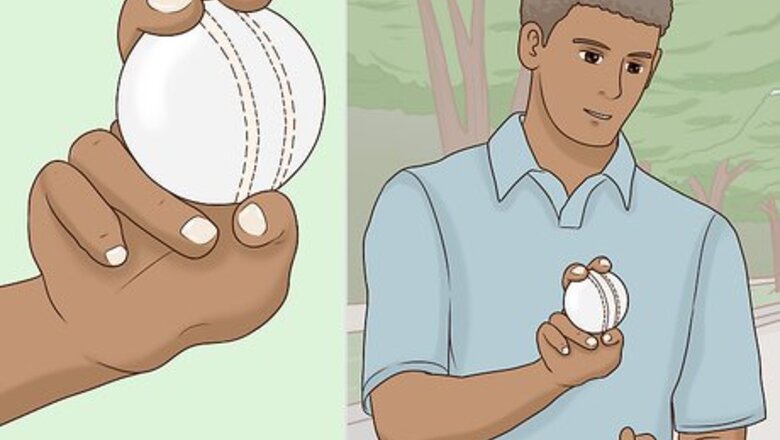
views
Improving Your Delivery

Take a grip that's more effective for fast bowling. Place your fore and middle fingers parallel to the vertical seam running down the center of the ball. Then, wrap your thumb around the bottom so that it rests directly on the seam. The ball should fit snugly in your hand, with no wiggling or slipping.Tip: Keep a firm grip on the ball, but don’t squeeze it too tightly. This can cause the muscles in your arm and shoulder to tense up, stunting your delivery. Becoming a better fast bowler starts with knowing how to hold the ball for greater accuracy and control.
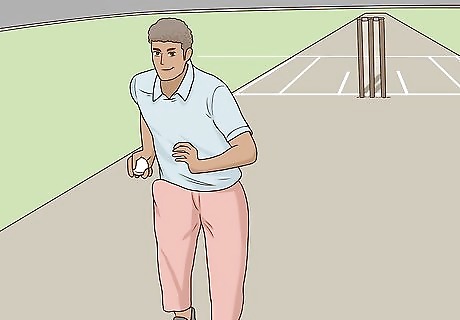
Fine-tune your run up. Experiment with the speed, length, and angle of your approach and settle on one that feels natural. Many fast bowlers favor a long run up that gives them plenty of room to build momentum before they hit the crease. Others do better with a relatively short run up. There’s no single best length—the key is to figure out what's most comfortable for you. Several of the best fast bowlers in the world make use of fairly short run ups. Some take as few as 8-10 paces before delivering the ball.

Use your wrist to generate momentum. At the moment of release, snap your wrist and follow through with your entire arm until it comes to a stop just above waist height. Giving the ball a little push as it leaves your hand will allow you to channel your full power into the bowl, adding considerably to your overall speed. Try not to lock your wrist. Keep it relaxed and facing upwards so that you’ll be in a better position to whip it as you come to the end of your run up. Practice safely. Moving through an increased range of motion at high speed can place a lot of stress on your wrist if you’re not careful.
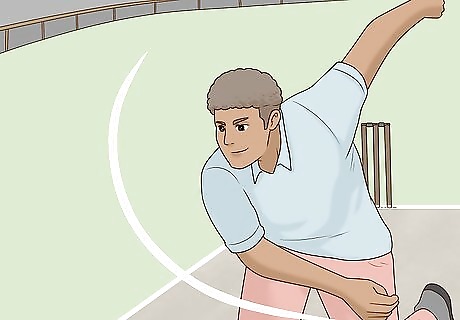
Prioritize speed over precise placement. Before you start obsessing too much about line and length, focus on getting maximal acceleration. Make each delivery as fast as you can without sacrificing control. High-speed accuracy will come naturally later on, but it’s hard to develop pace once you’ve become set in your ways. Make an effort to put the same amount of intensity in each delivery as you continue to refine your technique.
Mastering Basic Fast Bowling Skills
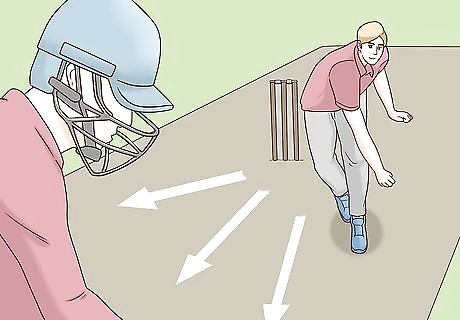
Change up your line of delivery to confuse the batsman. Bowl different lines to keep the batsman guessing and bait them into making a mistake. If you always bowl to the off side, leg side, or midline, the opposing team’s batsman will quickly catch on and you’ll give up more runs as a result.Avoid bowling down the leg side too frequently, as these deliveries usually either hit or called for being wide. “Line” refers to the path the ball takes as it sails down the pitch. A bowl directed to the batsman’s front side is said to be “off,” while one that goes behind them is known as “leg.”

Aim for a good length with each bowl. Try to deliver the ball so that it touches down about 6–8 metres (20–26 ft) in front of the batsman. Bowling a “good length” (where the ball bounces near the middle of the pitch) makes it harder for the batsman to predict the height and angle of the ball by the time it reaches them. “Length” indicates the point along the pitch where the ball bounces on its way to the batsman. By contrast, “short” bowls bounce closer to the bowler, while “full” bowls land closer to the batsman. These types of deliveries are easier to hit, since they either give the batsman more time to watch the ball or telegraph the line in advance.
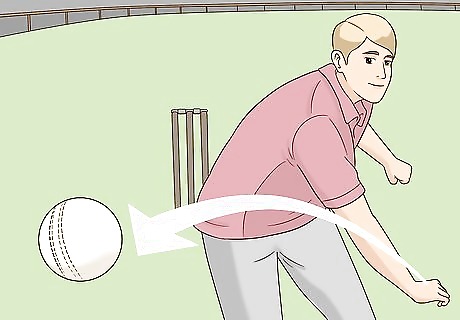
Learn to bowl swing. Swing is an advanced delivery technique that involves getting the ball to curve in mid-air. Keep the ball polished smooth on one side of the seam between innings while leaving it roughed up on the other. The uneven airflow around the ball will cause it to change directions suddenly, throwing off the batsman’s aim at the last second. Swing ordinarily causes the ball to veer in the opposite direction of the polished surface. To make the ball curve to the off side, for example, bowl it with the polished side facing your right, or the batsman’s left. Be aware that swing is considered tampering in some leagues, and could result in a penalty or disqualification.
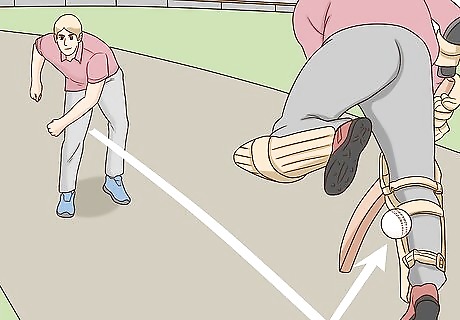
Practice bowling Yorkers. A Yorker is a bowl that lands directly at or just in front of the batsman’s feet. Deliver the ball straight down the middle of the pitch so that it makes contact right around the popping crease. When bowled just right, a Yorker forces the batsman to adjust their footing, leading to either a hit on the wicket or a leg-before-wicket dismissal.Note: A mistimed Yorker can easily turn into a full toss or half-volley, giving the batsman an easy shot. For this reason, they may be best reserved for more experienced fast bowlers in desperation plays. Yorkers are one of the hardest bowls in cricket to pull off effectively, which means getting good at them will require a lot of practice.
Strengthening Your Mental Game
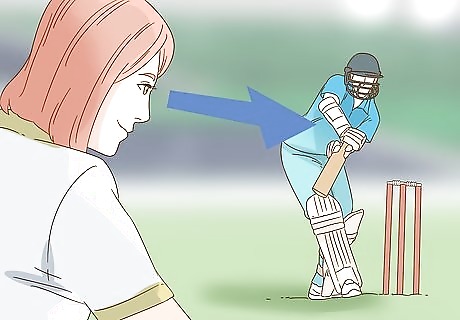
Study the batsman carefully. Vary your deliveries and watch how the batsman responds. Altering your line, length, and speed every few throws will show you how they instinctively react to different deliveries, which will then give you a chance to exploit their weaknesses. For example, deliver one bowl a little wide on off side to see if the batsman will attempt to reach for a shot, then bowl the next one short to see whether they play forward or back. The more holes you spot in the batsman’s defense, the more likely you are to come up with a strategy for getting them dismissed.

Stay focused. Don't allow yourself to be distracted by the taunts of the batsman or the opposing team’s fans. Your attention should be on the ball, the pitch, the batsman in play and nothing else. It's crucial that you be able to keep your cool, no matter what turns the game takes. Play your best all the way to the end—imagine that each delivery you bowl is the most important in the game. A standard game of cricket can last hours. Keep this in mind during practice to develop your mental endurance along with your physical stamina.

Build confidence in your skills. Approach the bowling crease as though you can’t lose. That way, you’ll be able to concentrate entirely on the task at hand rather than worrying about what will happen if you fail. If you doubt your ability to outsmart the batsman, there's more of a chance that you'll come up short. The slightest hesitation could cause you to lose valuable accuracy or control, allowing the opposing team to score runs.

Have fun. Don’t let the stress of a few intense innings take away from your love of the game. At the end of the day, you’re there to enjoy yourself and engage in a little friendly competition. Chances are, you’ll find that you actually play better when you’re not consumed by the need to win.
Conditioning Your Body

Increase your endurance with cardio exercises. If you’re in good shape, you’ll be a better cricket player. Aim to get 150 minutes of moderate cardio, or 75 minutes of vigorous cardio, per week. You can do activities like running, jumping rope, bicycling, and swimming.

Do weight training to increase your strength. In addition to getting aerobic exercise, you should also work out all of your major muscle groups twice per week or more. Increasing your muscle strength will help you be a good bowler.Tip: Try activities such as lifting weights, rock climbing, or resistance training.

Eat a healthy diet. To stay healthy and fit, aim to eat a diet comprised of a variety of healthy foods. The majority of your diet should include lean protein, fresh fruits and vegetables, and complex carbohydrates. Limit your intake of processed foods, items containing saturated fats, and sugar. Be sure to stay hydrated as well. Aim to drink 15.5 cups (3.7 L) of water each day if you are a male, or 11.5 cups (2.7 L) of water per day if you are a female.












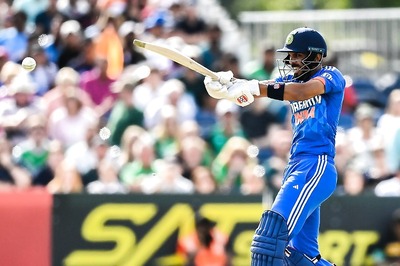






Comments
0 comment